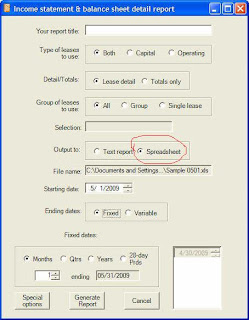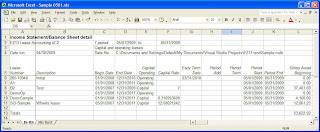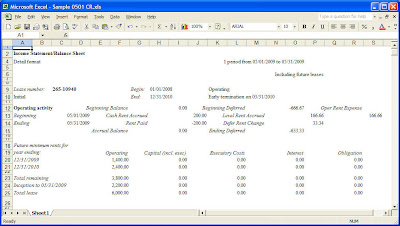The FASB and IASB had a joint meeting via videoconference today. Among several topics of discussion was lease accounting, for both lessees and lessors. The staff’s agenda papers are available at the IASB’s web site (where you can also view an archive of the webcast). Discussion was lengthy enough that the 2-1/2 hours allocated were insufficient, and so discussion of contingent rents was postponed until a December 16-17 joint meeting.
In general, the boards agreed with the staff’s presented recommendations, some of which varied from their preliminary views as presented in the discussion paper (see previous entries in this blog); the changes were prompted by comments on the discussion paper. Some highlights of changes from the preliminary views:
- Interest rate for present valuing the rents: The preliminary views called for the lessee always to use their incremental borrowing rate. After lengthy discussion, the boards agreed to permit use of the implicit rate if it is readily determinable.
- Initial direct costs associated with a lease will be capitalized by the lessee and amortized over the lease term; a lessor will likewise add initial direct costs to the lease receivable and amortize them (using the interest method). Some members of the boards wanted to clarify that this applies only to incremental costs incurred, not to an allocation of salaries and other expenses that the company would be paying whether or not a lease was signed.
- The boards agreed that the incremental borrowing rate should not be changed during the life of the lease (as long as the lease term is not changed). This had been previously a point of disagreement between the boards.
- Impairment of leased assets will be determined based on existing impairment standards (which are different for US GAAP and IFRS). Similarly, revaluation will be based on the separate standards (US GAAP does not permit revaluation, while IFRS permits it under limited conditions).
- The initial measurement of a lessor’s lease receivable will be based on the present value of the rents, using the lease’s implicit rate (it was noted that this could be different from the explicit rate when promotional rates, like 0% interest, are being offered).
- Subsequent measurement of the receivable will be at amortized cost using the effective interest rate (like a current capital lease).
- The lessor’s performance obligation (a credit) will be equal to the receivable at lease inception (including any initial direct costs that are added to the receivable as noted above).
- The performance obligation would normally be amortized on a straight-line basis unless another method is more representative of usage (there was some discussion of whether the usage pattern would only be time-based as opposed to unit-based; I’m not sure if a conclusion on that was reached).
- For recognizing options in the lease term, the boards adopted an altered determination of the term suggested by some discussion paper respondents: rather than the “most likely lease term,” the standard is now “the longest possible lease term that is more likely than not to occur.” Thus, if there were a 40% possibility of the first option being exercised, and a 20% possibility each of exercising through options 2, 3, and 4, options 1 & 2 would be included, because the likelihood that the life will be longer is less than 50%. This applies to both lessees and lessors.
- In determining when options are to be included, the discussion paper stated that the review should include contractual, non-contractual, and business factors, but not past practice and lessee intention. That has been changed, and the boards now state that all factors, including past practice and lessee intention, should be considered. The boards are concerned that companies may use “intention” to game the results, but noted that intention will not trump other factors, but will be one of several factors to consider.
- Reassessment of whether options should be included, while in theory required each reporting date, need only be undertaken when facts and circumstances have changed, not simply due to the passage of time.



